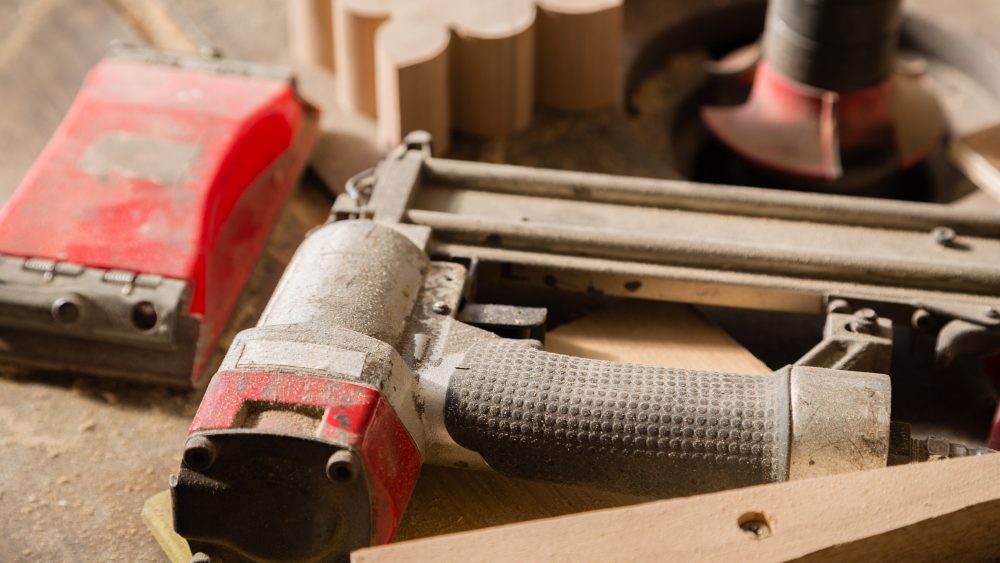In the world of residential construction, nail guns are essential additions to a crew’s equipment.
Caution should be taken when utilizing these powerful tools: nail guns can be very dangerous if used improperly. OSHA (Occupational Safety and Health Administration) estimates that approximately 37,000 emergency visits occur in the United States every year.
Nail Gun Injuries
An American study found that 40% of all carpentry apprentices experienced nail gun injuries. Injuries associated with nail guns are typically puncture wounds to hands and fingers, however, severe nail gun injuries can result in death.
The CDC (Centers for Disease Control and Prevention) reports that there are seven major risk factors associated with nail guns:
- Unintended nail discharged from double fire;
- Unintended nail discharge from knocking the safety contact with the trigger squeezed;
- Nail penetration through lumber work piece;
- Nail ricochet after striking a hard surface or metal feature;
- Missing the work piece;
- Awkward position nailing; and
- Bypassing safety mechanisms.
Preventing Injuries
OSHA recommends six practical steps that can be taken to prevent nail gun injuries. They are as follows:
- Use full sequential trigger guns;
- Provide training;
- Establish nail gun work procedures;
- Provide PPE;
- Encourage reporting and discussion of injuries and close calls; and
- Provide first aid and medical treatment.


Comments are closed.